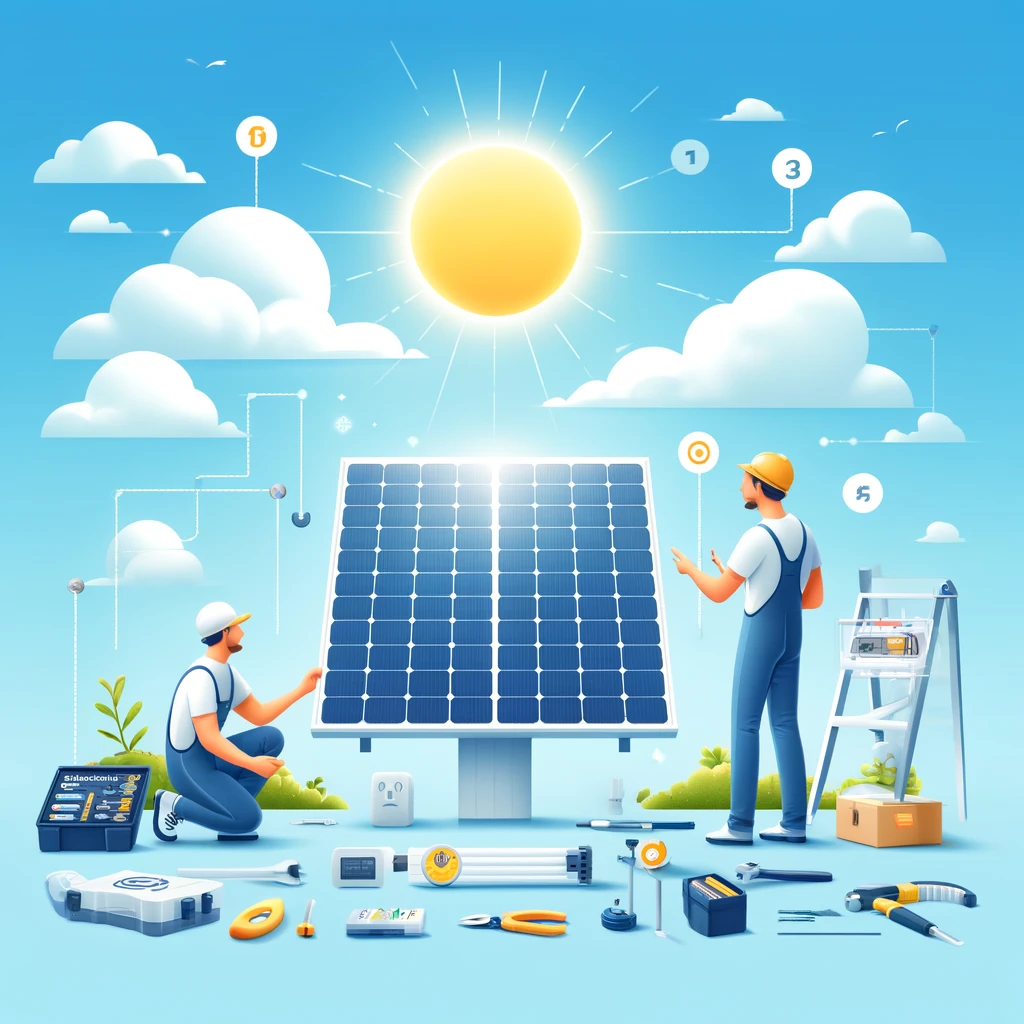Embarking on the journey of setting up solar energy equipment can be both exhilarating and overwhelming. You’re taking a significant step towards sustainability, but the array of equipment and technical jargon can be daunting. Fear not! As your solar energy consultant, I’m here to guide you through the process. We’ll start by understanding the components, then move on to choosing the right solar panels, the role of the inverter, battery storage, mounting your solar panels, and the role of electrical accessories. By the end of this article, you’ll not only understand the basics but also feel equipped to embark on your solar journey.
The Heart of Solar Equipment Setup
Understanding the Components
At its core, a solar equipment setup comprises solar panels, an inverter, a battery system (for storage), mounting equipment, and various electrical accessories. Each component plays a crucial role in converting sunlight into electricity, storing it, and making it usable for your home.
Choosing the Right Solar Panels
Solar panels are the stars of the show, capturing sunlight and converting it into electricity. When choosing solar panels, consider efficiency, durability, and the space available on your roof. Feel free to consult with a professional to find the best fit for your specific needs and geography.
The Solar Inverter: Your System’s Brain
The inverter is what turns the direct current (DC) generated by your panels into alternating current (AC), which powers most home appliances. There are several types of inverters, each with its pros and cons. String inverters are cost-effective and suitable for systems without shading issues, while microinverters offer greater efficiency and are perfect for roofs with partial shading.
Battery Storage: Saving for a Sunny Day
If you’re considering going off-grid or want a backup for when the grid goes down, battery storage is essential. Modern solar batteries are compact, long-lasting, and can store surplus energy for use during nighttime or cloudy days. The key here is to balance capacity with your energy needs, ensuring you have enough power when you need it.
Mounting Your Solar Panels
The way your solar panels are mounted can significantly affect their efficiency. Panels should ideally face south (in the Northern Hemisphere) and be tilted at an angle that maximizes sun exposure year-round. Ground mounts and pole mounts are alternatives if your roof isn’t suitable.
The Role of Electrical Accessories
From wiring and switches to meters and monitoring systems, electrical accessories ensure your solar system runs smoothly and safely. While it might be tempting to DIY, working with a certified electrician for installation and setup is strongly advised.
FAQs on Solar Equipment Setup
To help clear up common confusion, let’s tackle some frequently asked questions:
Can I install solar equipment by myself?
While it’s possible to DIY your solar setup, it requires a solid understanding of electrical systems and local regulations. For most, hiring a professional will ensure safety and efficiency.
How do I maintain my solar setup?
Solar systems are low maintenance, but regular checks are advised. This includes cleaning panels and monitoring system performance. Most issues can be preemptively identified with regular maintenance.
How long will my solar setup last?
Solar panels can last 25-30 years or more, while inverters need replacing every 10-15 years. Batteries vary depending on type and usage but typically last between 5 and 15 years.
Is my home suitable for a solar setup?
Most homes can accommodate solar, but factors like roof condition, shading, and space can affect efficiency. A professional assessment can help determine suitability and the best setup for your home.
In conclusion, stepping into the solar arena with a basic understanding of solar equipment setup can significantly demystify the process. You’re not just investing in hardware; you’re investing in a cleaner, more sustainable future that can bring long-term benefits to your home and the environment. Remember, the journey to solar energy is a marathon, not a sprint. Take your time to understand the components, consult with professionals, and tailor a system that meets your energy needs and sustainability goals. With each step, you’re moving closer to a brighter, solar-powered future.
Embracing solar energy is not just a financial decision; it’s a commitment to reducing your carbon footprint and contributing to a greener planet. With the right approach, the transition to solar can be an exciting adventure. So, gear up, harness the sun’s power, and light up your home with clean, renewable energy. The future is bright, and it’s solar-powered.






















Recent Comments